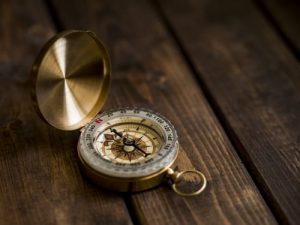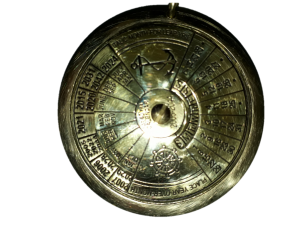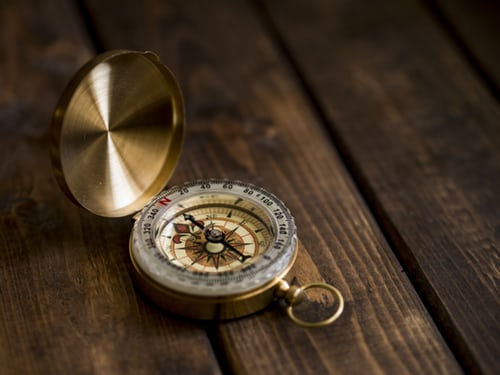
When I was 16 people said to me “maths, history and German? That’s a strange set of A-Levels.” Thirty years later, and with degrees in maths and history, last week a colleague said to me that she had never expected two such different subjects to exist together in one human being.
Having been the kind of human being who is passionate about both mathematics and history for all of my life, I have never got my head around responses like these. Take a look at this object and listen to the questions that you start to ask yourself.

Here are some of my questions…
| What is it? | |
| What was it for? | How do you use it? |
| How old is it? It looks like a reproduction. When and why was the original made? Why did someone make a reproduction? Why does it have nautical symbols on it? What would its original owners have used it for? Was it a tool or a luxury item? | How does it work? Why are the months and years in groups? What determines those groups? Could I create one? What happens in leap years?
|
I first wanted to know what it was. Having discovered that it is a perpetual calendar, I wanted to know why such a thing exists and how it works. The ‘why’ question took me into a line of questioning which began by questioning its historical context. The nautical symbols were a clue that it may have been used at sea. But why? Why would sailors want to know what day of week it was going to be? Would they use it to plan for future events or to look back at the past? Was it a luxury item or a tool, and if it was a tool, how important amongst the other tools used at sea? My questioning soon moved towards the historiographical, wondering why such an item survived and why someone chose to manufacture and sell a reproduction. What does this say about our relationship with the past?
Questioning how it works drew on mathematical thought processes. I am lucky enough to have the actual object in my hands and so I figured out the process for using it to find what day of the week a particular date was on (my 50th birthday will be on a Monday). Frustrated by its limited date range (it covers 2005 – 2044) I started wondering about the mathematics behind its design and whether I would be able to create one myself for a different period. And then I asked the ultimate mathematics question – could I make one that would cover any period, or at least develop an algorithm that would allow anyone to create one for any period.
For me mathematics and history have always been natural partners offering different ways of thinking about similar things. Did you experience the same while looking at this object?
Fiona

